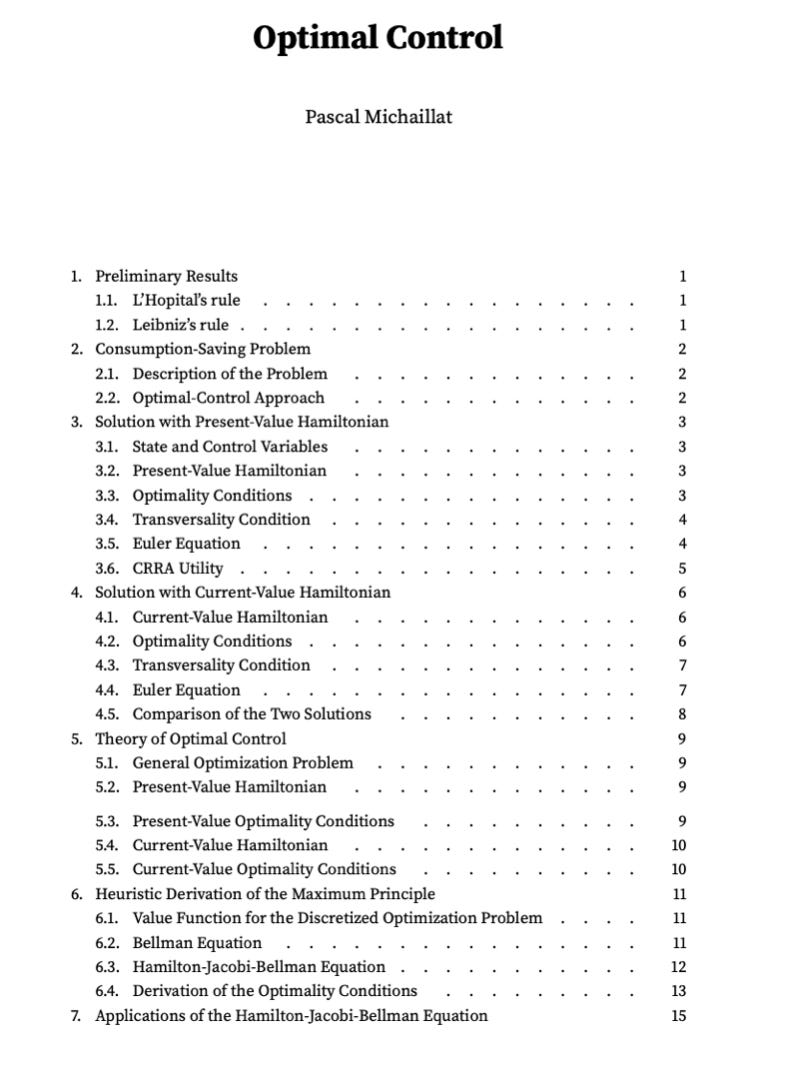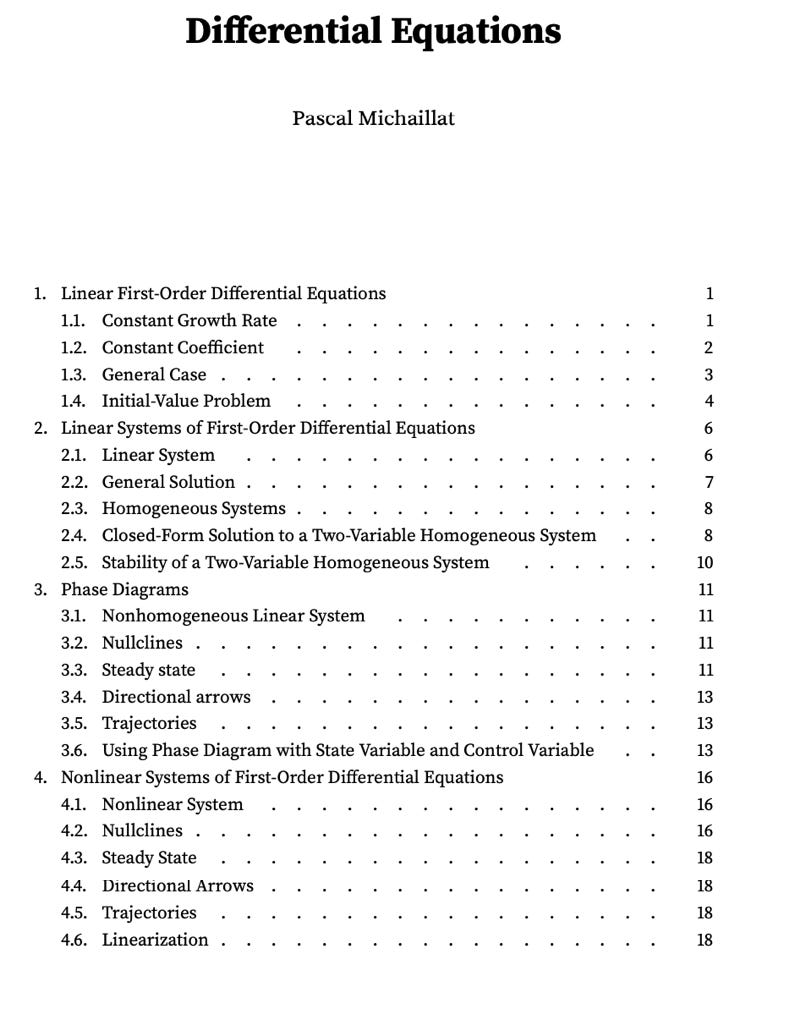Learning Dynamic Optimization and Differential Equations in One Week
Just in case first-year graduate macroeconomic courses disappear.
First-year graduate macroeconomic courses are a threatened species. For the past fifteen years, many non-macro graduate students have been advocating for cancelling first-year macro courses (this was already the case when I was in graduate school in 2006–2010). Now, Jon Steinsson tells us that MIT has made first-year macro courses optional:

Jon’s tweet has caused quite a stir on Twitter. One thing that came up repeatedly in the discussion is that first-year macro courses teach students useful mathematical tools, and cancelling these courses will deprive students from these tools.
I taught mathematical methods for macroeconomics for two years when I was at the LSE.1 In one week, the course covered dynamic optimization and differential equations. All the course material—lecture notes and homework—is freely available online. I plan to keep the material permanently online, so even if first-year macro courses vanish, students can always brush up on their macro tools there.
The course covers three methods to study dynamical systems:
Dynamic programming
Optimal control
Differential equations
Let’s briefly look into the content of the three parts of the course.
Dynamic programming
The first part of the course covers dynamic programming, which is a method to solve dynamic optimization problems in discrete time.
We start by introducing the key concepts of dynamic programming in a simple, deterministic consumption-saving problem. We then introduce randomness into the consumption-saving problem and solve this stochastic problem with dynamic programming. Finally, as an application, we solve a Real Business-Cycle model with dynamic programming.
The full table of content of this part of the course is the following:
Optimal control
The next part of the course studies optimal control, which is a method to solve dynamic optimization problems in continuous time.
This section starts by formulating the consumption-saving problem in continuous time. We solve the continuous-time problem first by using a present-value Hamiltonian, and then by using a current-value Hamiltonian. (Both approaches are equivalent.) Then we discuss optimality conditions for general optimization problems solved by optimal control. To conclude, we discuss the Hamilton-Jacobi-Bellman equation.
The full table of content of this part of the course is the following:
Differential equations
The third and final part of the course introduces differential equations, which are used to describe continuous-time dynamical systems. (The course does not cover difference equations, which are used to describe discrete-time dynamical systems. This is because, in my view, differential equations are a much more elegant tool to describe dynamical systems.)
In this part we first solve linear first-order differential equations. We then move to linear systems of first-order differential equations. Next we discuss how we can derive the properties of a linear system of first-order differential equations by drawing its phase diagram. Finally, we turn to nonlinear systems of first-order differential equations—which are common in macroeconomics. Although we cannot solve them explicitly, we characterize their properties by constructing their phase diagrams.
The full table of content of this part of the course is the following:
Additional resources
The material covered in the lecture notes should be helpful to get started with research in macroeconomics, but it remains pretty basic. Thankfully, there are a lot of great resources available to learn more about these tools. My favorites are the following:
For dynamic programming: chapter 6 of Acemoglu’s textbook
For optimal control: chapter 7 of Acemoglu’s textbook
For differential equations: chapters 1–6 of Hirsch, Smale, and Devaney’s textbook
How to teach dynamic optimization and differential equations in one week
If anyone is interested in teaching this material to their graduate students, the LaTeX source files for the lectures notes and problem sets are freely available on GitHub. You can use them as is, or modify them as you see fit.
The LSE has a great system. The three weeks before the first semester of graduate school starts are devoted to bringing all students up to speed on mathematical methods (one week for micro, one for econometrics, and one for macro). Then the regular courses can focus on content.






Thanks pascal, why don't you upload a lecture series online on this as this is an important tool for every grad student who is interested in macro stuff. As earlier you have uploaded the best two courses I have seen, I really thankful for that ...looking forward for your reply ...
The truth is that a lot of these methods are not taught very well in macro at a lot of schools. I still go through your notes to get a quick check. Only if all grad schools had taught them well to tell us that these methods can give you interesting insights.